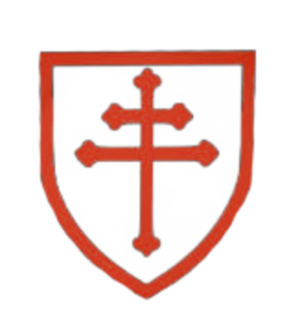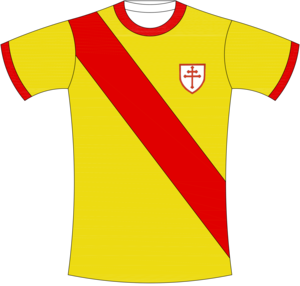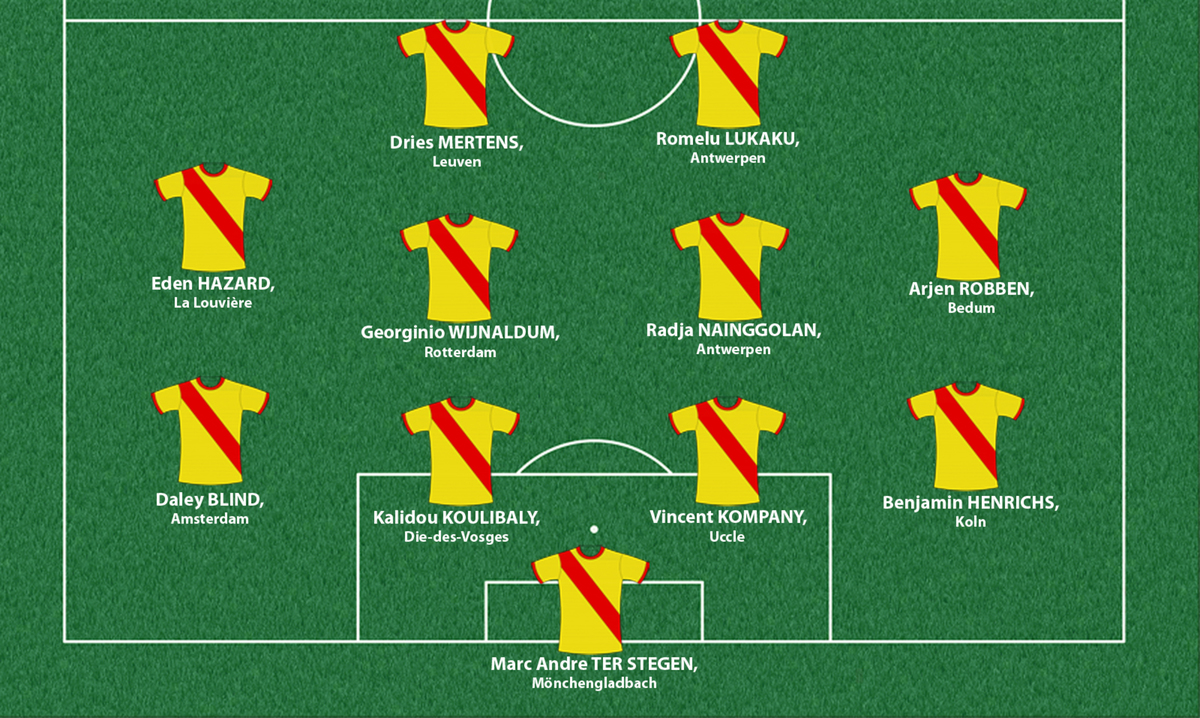Duchy of Lotharingia
Middle Francia (Francia Media) or Lothair's Kingdom (Lotharii Regnum) spanned the area from the North Sea to the Ligurian Sea but, unlike East and West Francia, it was short lived (843 – 855), and it quickly dissolved after the death of Emperor Lothair I into the Kingdom of Italy, Burgundy and Lotharingia.

Coat of arms

Shirt
| Position | First name | Last name | Mjesto rođenja | Like | Dislike | |
|---|---|---|---|---|---|---|
| GK | Jasper | CILLESSEN | Groesbeek |
2 |
2 |
|
| GK | Marc Andre | TER STEGEN | Mönchengladbach |
24 |
1 |
|
| GK | Thibaut | COURTOIS | Bree |
18 |
2 |
|
| DC | Joel | MATIP | Bochum |
1 |
2 |
|
| DC | Kalidou | KOULIBALY | Die-des-Vosges |
11 |
4 |
|
| DC | Stefan | DE VRIJ | Ouderkerk aan den IJssel |
4 |
1 |
|
| DC | Vincent | KOMPANY | Uccle |
15 |
0 |
|
| DC | Virgil | VAN DIJK | Breda |
10 |
2 |
|
| DRC | Toby | ALDERWEIRELD | Antwerp |
6 |
0 |
|
| DLC/DMC | Daley | BLIND | Amsterdam |
5 |
1 |
|
| DR | Benjamin | HENRICHS | Cologne |
6 |
2 |
|
| DR | Kenny | TETE | Amsterdam |
2 |
1 |
|
| DR/MR | Thomas | MEUNIER | Saint Ode |
4 |
0 |
|
| DL/MLC | Yannick | GERHARDT | Würselen |
2 |
1 |
|
| DMC | Morgan | SCHNEIDERLIN | Zellwiller |
7 |
7 |
|
| DMC | Youri | TIELEMANS | Sint-Pieters-Leeuw |
8 |
0 |
|
| MC | Georginio | WIJNALDUM | Rotterdam |
4 |
2 |
|
| MC | Kevin | STROOTMAN | Ridderkerk |
4 |
1 |
|
| MC | Mousa | DEMBELE | Antwerp |
6 |
2 |
|
| MC | Radja | NAINGGOLAN | Antwerp |
9 |
0 |
|
| MC/SS | Marouane | FELLAINI | Brussels |
5 |
0 |
|
| AMC | Hakim | ZIYECH | Dronten |
4 |
2 |
|
| AMC | Wesley | SNEIJDER | Utrecht |
7 |
0 |
|
| AMRLC | Eden | HAZARD | Le Louviere |
20 |
1 |
|
| AMRL | Amin | YOUNES | Düsseldorf |
2 |
1 |
|
| AMRL | Arjen | ROBBEN | Bedun |
9 |
0 |
|
| AMRL | Quincy | PROMES | Amsterdam |
3 |
2 |
|
| AMRL | Yannick | CARRASCO | Bruxelles |
4 |
0 |
|
| FRLC | Dries | MERTENS | Leuven |
10 |
0 |
|
| FC | Michy | BATSHUAYI | Bruxelles |
8 |
2 |
|
| FC | Robin | VAN PERSIE | Rotterdam |
4 |
0 |
|
| FC | Romelu | LUKAKU | Antwerp |
12 |
4 |
|
| FC | Vincent | JANSSEN | Heesch |
3 |
0 |
(Today part of Netherlands, central, western and southern Belgium, Luxemburg, parts of western Germany and northeastern France)
Lotharingia, which was approximately bordered by the axes of the rivers Escaut-Meuse and Ems-Rhine-Moselle-Voges, was named after Lothar II, who was the second son of the Francian Emperor Lothair I and the first king of Lotharingia (855 – 869). After the death of Lothair II, the rulers of East and West Francia divided his lands among themselves (870). Near the end of the 9th century West Francia, East Francia, Italy, and Burgundy still formally comprised a single Empire, but its integrity was severely disrupted in a succession of civil wars for the Emperor’s throne. At the same time, the area of Lotharingia managed to achieve a territorial wholeness once again, only to be subjected to the rule of domestic aristocracy with the title of dukes (Dux Lotharingiae) at the beginning of the 10th century. In a powerful political turmoil into which the Empire was thrown after the nobility of East Francia had chosen a member of a non-Carolingian dynasty as their Emperor (911), the Lotharingian aristocracy chose to remain loyal to the Carolingians, who were seated in Paris. Nevertheless, under military pressure from Henry the Fowler, the most powerful nobleman of East Francia, the Lotharingian duke switched sides during the 920s.
In 939 AD the East Frankish king gave the chance to the duke in power to raise Lotharingiato the rank of one of the electoral duchies of the East Frankish kingdom (along with Alemannia/Swabia, Bavaria, Saxony, and Franconia), whose rulers were given the right to choose kings. As opposed to the rest of the duchies, whose elites shared a common tribal identity, Lotharingian identity was purely a political construct, and its population spoke several old Germanic and old Romanesque languages. In the second half of the 10th century, the Lotharingian duke divided the duchy into Upper Lorraine and Lower Lorraine, putting the power into the hands of margraves who will, over time, gain more and more independence from his rule. Consequently, from mid-11th century, a multitude of earldoms, principalities, archdioceses, prince-bishoprics, and cities (Liege, Collogne, Holland, Louven, Zeeland, Guelders, etc.), all virtually independent from the duke’s power, will sprout in the northern Lower Lorraine, so the name “Lower Lorraine” will disappear from record, and the Upper will, henceforth, simply be called the Duchy of Lotharingia (Lorraine).
Sources
- Jean Francois NOEL, Sveto Rimsko Carstvo, Zagreb, 1998.
- ''Lothair II'', https://en.wikipedia.org/wiki/Lothair_II
- ''Lotharingia'', https://en.wikipedia.org/wiki/Lotharingia
- ''Treaty of Prum'', https://en.wikipedia.org/wiki/Treaty_of_Pr%C3%BC
- Coat of arms:
- https://en.wikipedia.org/wiki/Cross_of_Lorraine
